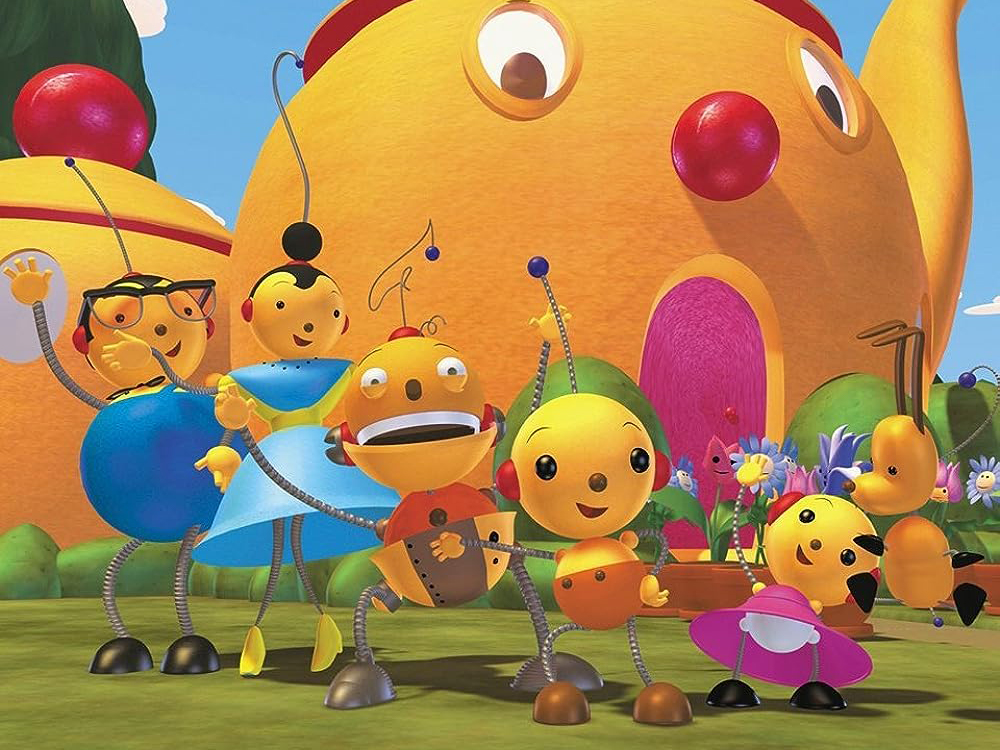Cartoon King
by Deirdre Kelly
photography by Mike Ford
As a mother of two, I often joke that while I may have given birth to my children, it was Michael Hirsh who truly raised them. As one of the founders of Nelvana, the groundbreaking Canadian animation studio behind such beloved shows as The Magic School Bus, Franklin and Little Bear, Hirsh has helped shape the childhoods of millions. His animated creations filled our Saturday mornings with laughter and learning, becoming staples in our home. From catchy theme songs to a wealth of merchandise – including books, lunch boxes, backpacks and board games – his work has been transforming children’s media for more than half a century, inspiring and engaging new generations of young viewers and creators alike.
Now in his 70s, Hirsh continues to inspire through his recently released memoir, Animation Nation: How We Built a Cartoon Empire. The book offers a behind-the-scenes look at his remarkable career, from co-founding Nelvana in 1971 – a scrappy, countercultural experiment born out of cramped apartments and wild ambition – to transforming it into a global leader in children’s entertainment and one of North America’s most influential animation studios. “I have been a workaholic because I have been super-focused on my goals,” he writes, reflecting on decades spent bringing imaginative worlds to life. His passion for storytelling remains undiminished, even as he transitions into what he jokingly calls “retirement” – a phase that seems anything but quiet.




Hirsh’s unlikely rise to becoming a cartoon king began in the late 1960s at York’s Glendon College, where he initially pursued philosophy. The son of Holocaust survivors, Hirsh grew up with a deep appreciation for resilience and reinvention – qualities that would come to define his career.
All our peers thought we were nuts starting an animation company when there was virtually no animation industry at the time
Drawn to the dynamic course catalogue at York University’s Keele Campus, he quickly discovered that the descriptions often outshone the actual classes. The long commute between campuses became an increasing frustration, prompting him to leave after three years and fully commit to his budding passion for filmmaking.
He immersed himself in Rochdale College – a controversial hub of counterculture in downtown Toronto. Equal parts commune, art experiment and anarchist free-for-all, Rochdale became fertile ground for his creative ambitions. “We are young and wild – dropping acid and dreaming big,” he says over a recent lunch of sushi and jasmine tea – his treat. “It is all about finding like-minded people who want to change the world through animation.”
This period of artistic exploration set the stage for Hirsh to connect with collaborators, including Patrick Loubert (BA ’69), a fellow York student brimming with ideas and a shared love of avant-garde cinema. Together, they formed Laff Arts, a small production company that produced experimental films and animations, laying the groundwork for their future ventures. Joining them was Jack Christie (BA ’68), whom Hirsh had met when both were students living down the hall from each other in residence. Christie recalls those early days as a time of unbridled creativity.
“Glendon’s leafy campus was an island of tranquility where Michael and I, aided by consciousness-altering medicinals, let our imaginations run wild, particularly on weekends when the residences emptied out, as most of our fellow students headed home. Glendon’s bilingual curriculum was a unique approach to bridging the ‘two solitudes.’ That avant-garde spirit rubbed off on us and flavoured our fledgling cinematic aspirations.”

Their first break came when animator Marc Chinoy approached Hirsh with a proposal. “Marc asked me to put together a small crew [so] that he could try to produce stop-motion animation, so we got to make five animated shorts for Sesame Street, learning how to animate as we went along.”
That early work gave Hirsh and Loubert the confidence to take on more animation projects, but finding their footing in the industry was anything but straightforward. “Patrick and I went out to make sales wearing old suits we bought at the Salvation Army,” Hirsh recalls. “We often celebrated jobs we thought we’d get, but they didn’t materialize. Were we too optimistic or too stoned to pick up on reality? Eventually, we stopped using hash or opium beforehand and started pitching sober.”
That clarity of focus soon led to something far more ambitious: the founding of Nelvana in 1971. Hirsh and Loubert co-founded the studio with Clive A. Smith, an English animator educated at the Ealing School of Art. Smith had worked on the Beatles’ animated TV series at Halas and Batchelor before moving to Toronto in search of new opportunities. Introduced by Carole Pope and Kevan Staples – who would later form the band Rough Trade – Smith brought precise technical skills as a character designer and 3D-model builder, complementing Hirsh and Loubert’s vision with his ability to actually draw and animate.
“All our peers thought we were nuts starting an animation company when there was virtually no animation industry at the time,” says Smith, who initially kept the fledgling studio afloat with commercial and government contracts. “We actually were nuts, which is why it worked. Fearless were we.”
The trio named their company Nelvana, after Canada’s first female superheroine from the 1940s comic book series Triumph-Adventure. This was no coincidence. Hirsh and Loubert’s 1971 publication, The Great Canadian Comic Books, illustrated by Smith, had revived interest in wartime Canadian comics. Their research preserved forgotten cultural history and provided seed money for the studio, reflecting a commitment to Canadian stories that would define Nelvana’s future.
“We weren’t just starting an animation studio,” Hirsh says. “Patrick and I were passionate Canadian nationalists who wanted to show what our country could do.” Loubert adds: “We believed animation could be something bigger – it could be art.”
But their beginnings were far from glamorous. Nelvana’s first office – a third-floor walk-up above a printer on King Street West – was an eccentric space with a bathtub inexplicably in the middle of the room. Their first animation stand? It was built over a toilet bowl using a 16-mm Bolex camera.
In its early years, Nelvana faced constant financial pressure. Hirsh and his partners scraped by on $25 weekly draws – when they could afford it – and picked up freelance work for CBC Radio or magazines to make ends meet. At home, Hirsh and his wife Elaine Waisglass – whom he had met at Rochdale and would later marry and have a son with – shared a house with other creatives, living what Hirsh calls a “bohemian lifestyle.” Bills often went unpaid until someone came knocking to cut off the power or phone. Meanwhile, Waisglass – trained as an artist – began building her editing career at CBC’s As It Happens, her steady paycheque helping to sustain the household while Nelvana’s founders worked tirelessly to get their animation venture off the ground.
Everything changed in 1977 with A Cosmic Christmas. The animated holiday special blended traditional themes with a science fiction twist, earning praise for its sophisticated storytelling and European-inspired animation style. The concept was Loubert’s brainchild. “The idea of A Cosmic Christmas came to me by way of a personal experience with a UFO – I believe that term has been replaced, but who’s counting? – and a High Anglican upbringing, which of course involved Christmas carols mentioning the Three Wise Men.”
The program aired on CBC and caught the attention of George Lucas, who commissioned Nelvana to create “The Story of the Faithful Wookiee,” an animated segment for The Star Wars Holiday Special that aired the following year. Featuring the first-ever appearance of Boba Fett, the project launched Nelvana on the international stage. The company was soon working with partners in France, Ireland, Korea and beyond, setting a new standard for Canadian animation.

“Michael was the driver of the business,” says Jocelyn Hamilton, who worked at Nelvana in the 1990s and is now president of television at Lionsgate Canada. “He represented Nelvana to the world at a time when the export of Canadian animation wasn’t yet proven. He started it. He established that Canada could be an international powerhouse. He led that charge.”
The company’s growing reputation opened doors for collaborations across creative industries, with musicians such as Rick Danko of the Band contributing to Nelvana’s evolving musical storytelling. These creative partnerships set the stage for Nelvana’s most ambitious project yet: 1983’s Rock & Rule. The studio’s first feature-length film brought together an all-star lineup of musicians – Debbie Harry of Blondie, Lou Reed, Cheap Trick, Iggy Pop and Earth, Wind & Fire – and attempted to merge animation and rock music in a way that had never been done before. “We wanted iconic rock artists to compose and sing the songs,” Hirsh says.
However, the film’s darker tone and mature themes made it difficult to market effectively, and its limited release left it unable to recover production costs. The commercial failure left Nelvana in significant financial trouble, pushing the studio to the brink of collapse.
It was during this turbulent period that Robert J. Foster, a York University donor, member of the Order of Canada and founder of Capital Canada Limited, stepped in. An early supporter of Nelvana specials such as The Devil and Daniel Mouse and Romie-0 and Julie-8, Foster provided critical financial backing through a debenture investment, ensuring the studio could weather the crisis.
“Michael is a bold, high-risk entrepreneur who was willing to challenge a sector where Canada had limited presence, build relationships, and create a world-class business,” Foster says. His belief in Hirsh’s vision helped stabilize Nelvana at a pivotal moment. Though Rock & Rule failed commercially at the time, it later achieved cult status – a reflection of Nelvana’s boldness and willingness to take creative risks that defined its reputation as a trailblazer.
With its footing restored, Nelvana entered a new phase of growth, turning its attention to television projects that would define the studio’s identity throughout the 1980s. Partnering with major networks, Nelvana produced animated series such as Inspector Gadget, The Care Bears and Babar. These shows not only solidified Nelvana as a leader in children’s entertainment, but also proved that Canadian animation could compete – and thrive – on the global stage. Hirsh directed that development.
Animation is fun, but it’s a serious business. It takes hundreds of people working together to create something great
As Nelvana grew, his leadership became defined by his pragmatic approach to business. “Michael was always about the objective,” says Vince Commisso (MBA ’92), co-founder and CEO of 9 Story Media Group, who started his career working at Nelvana soon after graduating from York. “He didn’t get angry or loud – he stayed methodical and logical. I live by that. It’s binary: you either meet the objective, or you don’t. And with Michael, the objective always was clear.”
Hirsh’s laser-focused concentration on the end goal allowed Nelvana to evolve beyond its early successes, embracing new technologies and expanding its global footprint. By the following decade, Nelvana transformed animated storytelling with Beetlejuice and The Adventures of Tintin – international hits that showcased the studio’s global reach. It had also revolutionized its production process, moving beyond traditional hand-drawn animation by integrating digital tools such as Animo software for ink-and-paint and compositing.
“Animation is fun, but it’s a serious business,” Hirsh says. “It takes hundreds of people working together to create something great, and the real challenge is keeping that team together between projects. Salaries need to be paid, software licences maintained and the lights kept on – even when there’s no work coming in. Those lean times test your resolve, but they also push you to innovate.”
Nelvana’s commitment to innovation continued to drive its growth. The acquisition of Windlight Studios in Minneapolis in 1997 marked a turning point, enabling the studio to experiment with CGI. This investment culminated in Rolie Polie Olie, one of the first fully CGI-animated series, which earned multiple Emmys for its innovative approach. Even traditionally styled shows like Little Bear and The Magic School Bus benefited from these advancements, as Nelvana blended classic aesthetics with new digital efficiencies, setting a precedent for hybrid production in children’s animation.
But as Nelvana reached new heights, Hirsh and his partners faced a pivotal decision. Scaling the company to meet growing global demand required resources beyond what they could provide alone. In 2000, they sold Nelvana to Corus Entertainment for $540 million (equity value). The deal ensured the studio’s continued growth, while giving Hirsh the freedom to pursue new creative challenges. “It was bittersweet,” Hirsh says. “We had built something extraordinary, but we knew this was the right step to secure its future.”
Not long after, Hirsh was already turning his attention to rebuilding another animation powerhouse. In 2004, he led a group of investors to acquire CINAR, a Montreal-based company mired in financial scandals, and rebranded it as Cookie Jar Entertainment. Determined to restore its reputation, Hirsh revitalized beloved properties such as Arthur and Caillou, while championing original hits such as Johnny Test and The Doodlebops. The latter became a cultural phenomenon, with Disney Channel backing and live tours across North America.
As streaming platforms began reshaping how audiences consumed content, Hirsh saw another opportunity to adapt. In 2012, he sold Cookie Jar to DHX Media (now WildBrain), a move that made DHX the largest independent owner of children’s programming globally. Though he stayed on briefly as executive chairman – overseeing projects including a reboot of Inspector Gadget for Netflix – Hirsh was already looking ahead to the next frontier.
In 2016, Hirsh co-founded WOW! Unlimited Media, merging Rainmaker Entertainment (a Canadian animation studio) and Frederator Networks (a digital animation company) to create a powerhouse built for the streaming era. WOW! quickly became a hub for digital-first storytelling, producing content for platforms such as Netflix and YouTube. For nearly a decade, Hirsh steered WOW! through the ever-changing landscape of digital media, adapting to new platforms and audience preferences with the same innovative spirit that had defined his career. As the company continued to grow and evolve, Hirsh found himself contemplating the next chapter of his own story.
As 2023 drew to a close, Hirsh found himself facing what he playfully calls in his book “a problem” – retirement. At 75, he stepped down as CEO and chairman, but true to form, Hirsh’s idea of retirement is anything but conventional. For him, stepping down simply means stepping into a new chapter of creative possibilities.
His latest goal? Buying back Nelvana – the company that started it all. “Animation is limitless,” Hirsh says. “There’s always another story to tell.” ■